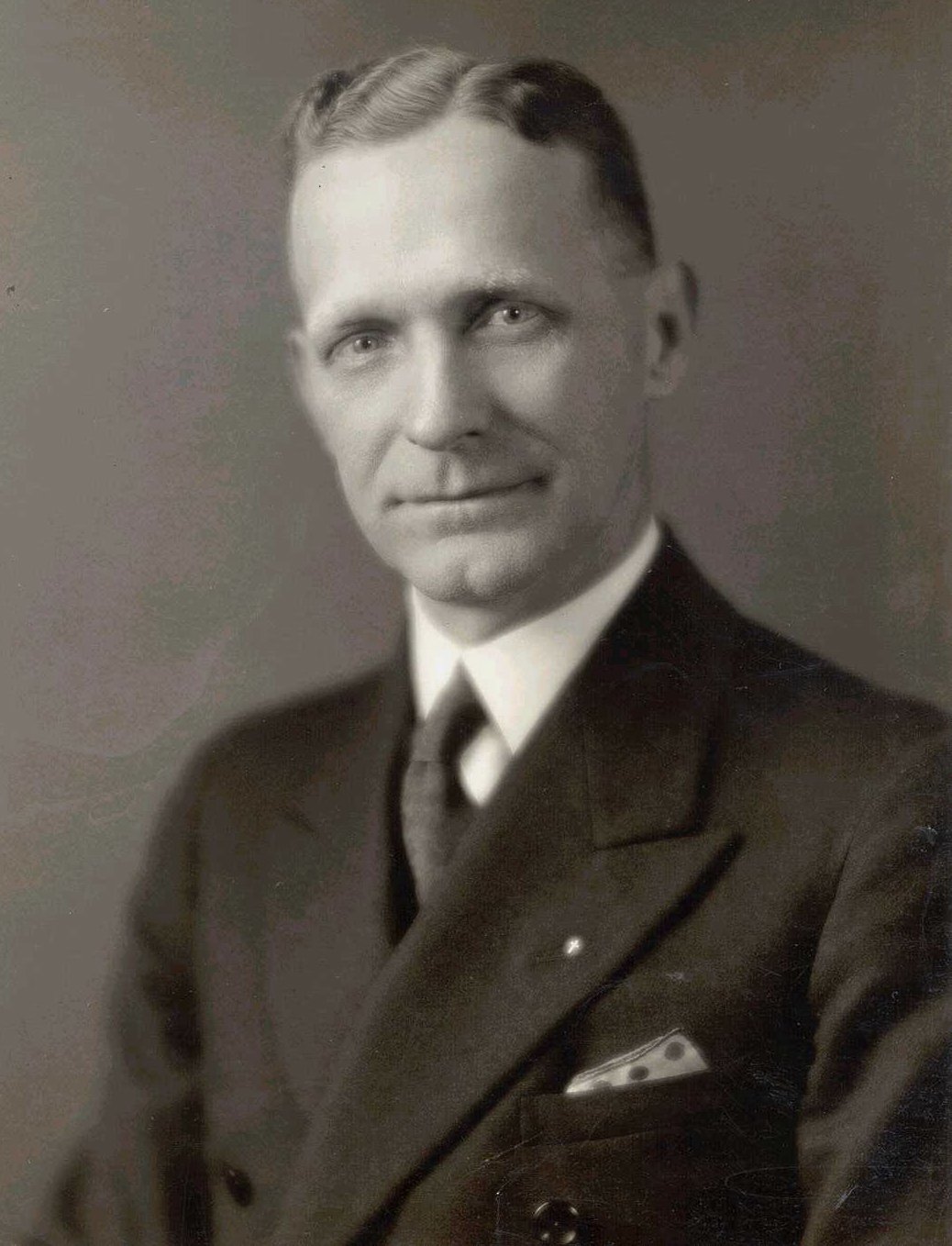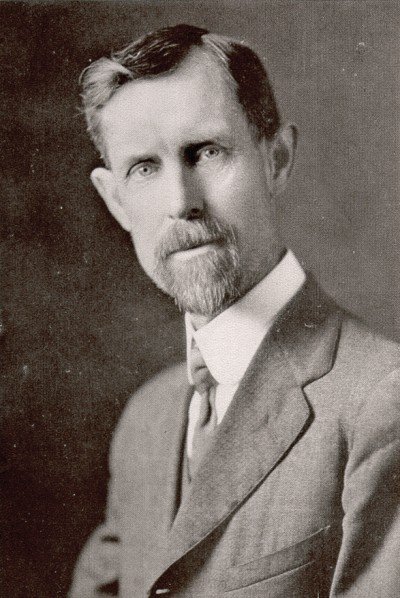Deep roots in Southwest Virginia and Northeast Tennessee
Our History
Bristol was a preaching point, visited by Dr. Abel Jacob Brown of Blountville in the 1870’s. Dr. Brown, a graduate of Emory and Henry College and Roanoke College, helped to organize several parishes from Morristown to Bristol in northeast Tennessee. The Church of the Redeemer began as a mission in 1891 under the leadership of the Rev. Joseph Lafayette Murphy, a native of Bristol. Educated at Roanoke College and Philadelphia Seminary, Murphy was a missionary with the Holston Synod who preached regularly and established a Sunday school, although he did not serve full time at the Bristol mission.
From 1893-1903, the mission received infrequent pastoral support, but occasional services were held by visiting pastors, most notably the Rev. Joseph Brown Greever of the Holston (TN) Synod and the Rev. Alexander Phillippi of the Southwestern Virginia Synod. By 1903, the Bristol mission was seen as an important field with an immediate financial need, and it was organized in the early winter of that year, probably around January 25, 1903. The membership rolls of the parish recorded twenty-three persons, all received by special order from Lutheran parishes, mostly in Sullivan County, Tennessee. The parish made application and was admitted to the Evangelical Lutheran Synod of Southwestern Virginia at its meeting at Burke’s Garden in Tazewell County on August 14, 1903. On September 1, 1903, Redeemer called its first pastor, the Rev. Paul Sieg. Pastor Sieg began his work on November 1.
Paul Lewis Yost
Rev. Paul Sieg
Redeemer’s first place of worship was in the former Y.M.C.A. building at the corner of Fifth and Shelby Streets in Bristol, Tennessee. After purchasing property from neighboring First Presbyterian Church at the same intersection for $2,500, ground was broken for construction of a building in the early spring of 1904. After a number of financial setbacks, the church building was finally completed and furnished in the spring of 1911. The parish register at that time reads, “The confirmation class of April 9, 1911 is the first regular class confirming the faith in the newly completed nave.” The church building was a brick structure, seating 300 people, with an adjacent Sunday school room. By 1918, five members had served their country during World War I; one member, William Price Akard, suffered injuries to the extent that he died in 1919.
On September 27, 1919, the property at 717 Fifth Street, Bristol, Tennessee was purchased for $2,500 for use as a parsonage for then pastor John Lewis Yost. The Rev. Dr. Yost served at Redeemer from 1917-1920 and went on to parishes in North Carolina and Georgia before becoming president of Lutheran Theological Southern Seminary in Columbia, SC in 1945. The Fifth Street parsonage was sold in 1930 at which time another property at 917 Edgemont Avenue was purchased for $7,000. In 1930, the value of the church building and property was $67,300, and the church rolls listed a membership of 160.
On March 16, 1922, a special convention of the Evangelical Lutheran Synod of Southwestern Virginia was called to consider a merger with the Evangelical Lutheran Holston Synod and the Lutheran Synod of Virginia. On September 7, 1922, Redeemer parish became a member of the Knoxville Conference of the Lutheran Synod of Virginia of the United Lutheran Church in America. Subsequently, in the reorganization of the U.L.C.A. to the Lutheran Church in America (L.C.A.), Redeemer became a member of the Southeastern Synod of the L.C.A. with headquarters in Atlanta, Georgia.
During the 1940’s, the congregation experienced growth to the extent that additional Sunday school space was needed. Therefore, pursuant to action by the congregation on October 21, 1945, a special effort to gather funds for the building of an educational unit to the church was begun. A portion of the original Sunday school building was demolished, and construction was begun. On Sunday October 26, 1952, the Sunday school and congregation began to hold services at the Y.M.C.A. as they had done in 1903. In June 1953, during the tenure of Rev. J. L. Link, the educational unit had been completed at a cost of $85,645.61. Many members of the congregation and other generous citizens of Bristol contributed to the financial needs of the congregation. With the completion of the educational unit, Redeemer celebrated its first fifty years in existence.
Between 1941 and 1945, no fewer than 40 members served during World War II. Five sons of the congregation died during their service: Albert Thomas Booher, Jr.; Joseph Leslie Combs, Jr.; John Furge, William Marvin King, and James Kenneth Weaver. Brass offering plates and an alms basin were given to the congregation in their memory and are still used by the congregation today.
By the late 1970’s, the condition of the original church building was such that major renovation would become necessary within the next few years. Adjacent property that had been purchased for use as a parking lot was considered for the construction of a new church building; however, the United States Post Office in its search for a location to build a consolidated post office for the cities of Bristol, Tennessee-Virginia approached the congregation with an offer to purchase the entire property. Many Bristol congregations had already moved out of the downtown area in favor of larger tracts of land outside of the business district. Subsequently, the congregation sold its property in downtown Bristol to the U.S.P.S. and began planning for the construction of a new church building outside of downtown Bristol. In the meantime, Sunday school and worship services were held in the Y.W.C.A. building on Fifth Street in Bristol, Tennessee beginning on November 11, 1979.
After searching and conferring with the Synod, the current property on the corner of Gate City Highway and Island Road was purchased. The plans for the new building were drawn and approved during 1980, and construction was begun. At the same time, Oak Grove parish in Washington County, Virginia, which was also served by then Pastor C. W. Howell approached Redeemer parish about a possible merger. Oak Grove parish was organized by the Rev. William Hancher around 1840, and had been formerly known as Liberty church and, later, Mumpower church. Members of the two congregations voted to merge on May 18, 1980, and the merger was affected on June 1, 1980 in the Circuit Court of Bristol, Virginia. At this time, Oak Grove Parish ceased to exist, and the surviving entity of the merger was the Evangelical Lutheran Church of the Redeemer. As the new property was in Virginia, Redeemer left the Southeastern Synod and again became a member of the Lutheran Synod of Virginia.
While the new church was under construction, services were held at Oak Grove Church. Eventually, the Oak Grove property was sold to a Baptist congregation and the proceeds applied to the congregation’s debt, which was approximately $510,000 at the outset.
On January 1, 1988, the Lutheran Church in America merged with the American Lutheran Church and the Assoication of Evangelical Lutheran Churches to form the Evangelical Lutheran Church in America (E.L.C.A.). Redeemer automatically became affiliated with the E.L.C.A., which remains the largest Lutheran church body in the United States today.
During the early 2000’s, the parish’s combination fellowship hall/gymnasium underwent extensive renovation. The completed renovation included installation of an elevator (to make the church building fully handicapped-accessible), a new, modern fellowship hall, an upstairs nursery, and two upstairs classrooms. Other recent additions to the worship space include a new Allen organ, replacing the congregation’s aging Möller instrument, and a handsome new font in the rear of the nave. Both of these projects were completed through the leadership and generosity of members of the congregation, without incurring any further debt.
Bibliography
Archives Committee for Biographical Sketches, Virginia Synod, LCA. Biographical Sketches of Lutheran Pastors in Virginia: 1820-1987. Salem, Virginia: Virginia Synod, LCA, 1992. Print.
Cassell, C.W., Fink, W. J. and Henkel, Elon O., eds. History of the Lutheran Church in Virginia and East Tennessee. Strasburg, Virginia: Shenandoah Publishing House, Inc., 1930. Print.
Eisenberg, William Edward, The Lutheran Church in Virginia 1717-1962. Lynchburg, Virginia: J. P. Bell Company, Inc. 1967. Print.
Jones, Harry R. Evangelical Lutheran Church of the Redeemer. “Report of the Long Range Planning Committee.” Bristol, Virginia: unpublished. 1992. Print.




